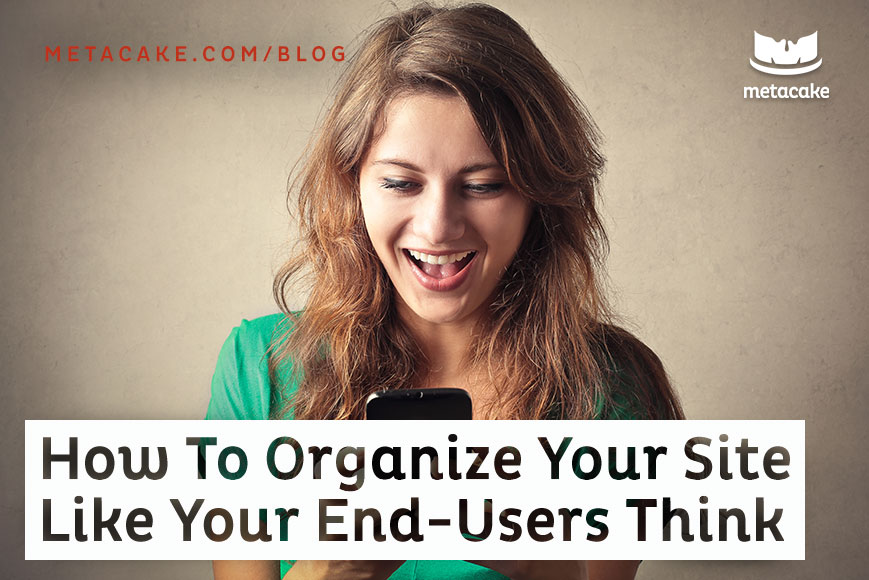
How To Organize Your Site Like Your End-Users Think
If you want to organize your site like your end-users think (and we recommend that you do if you plan to be successful), there are a couple of things that you need to know…
What is IA?
Just so we’re all on the same page, information architecture (IA) is the organization of all of the information on your site.
Sounds simple, right? Well, it is…and it isn’t.
Determining what information to include, and more importantly, what information goes where and how does a user get to it is actually incredibly complicated and deserves significant attention. Why?
What are the benefits?
A well structured IA that’s centered around your end users will increase your conversion rate and make users love using your site.
Think about it. Have you ever been on a site where each click is simply intuitive or second nature? Where you don’t have to think?
Compare this with the clunky experiences of websites where you can’t even find the proper contact information in order to file a complaint.
A well structured IA makes a huge difference in the success of your business.
And as a side perk, a great information architecture will help with your SEO too! A clear site structure makes your site more readable and will help your rankings in search results.
So here’s what you need to know before getting started:
1) Know Yourself
This sounds like a no brainier, but…you won’t believe how often this gets overlooked. Your brand, your product, why you do what you do.
Don’t just say “I know this” and move on…write it down, explore, know who you are and what pain point you solve for your clients and what your goals are moving forward.
2) Know Your End Users
And no, we don’t just mean demographic information. You may gain some insights from knowing where your customers are located, their age, gender, income level, etc, but this will only take you so far.
You need to get into the mind of your end users in order to understand not only how they behave, but why they behave that way. Why do they make the decisions that they do? How do they choose what to buy, and when and where?
Once you know these things…it’s time to get started.
With your goals and your customers needs at the forefront of your mind, you can now begin organizing all of your information into a formal information architecture. Approaching IA design this way forces you to think through what types of content and what functionality you need to include on your site and what role it’s going to play.
It’s important to note that not everything can have the same priority. You’re going to have to make some difficult decisions around what to put up front, and what can be left on the side, so make sure you have intention around how you organize all of your content.
By putting your customer first, figuring out how they think and what information is most crucial to them, you will be able to successfully move them through your funnel, getting them closer and closer to your conversion goal.
Look around at the most successful e-commerce brands and the innovative things that they are doing. Designing a site like this from a user perspective does not happen on accident. There is research and intention behind each and every piece of functionality and content…and more importantly how all of this content and functionality comes together.
It might feel natural, but trust us, it’s calculated. If you want to be successful and stay competitive in the long run, you need to be calculated too.



